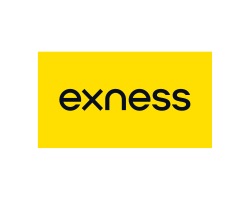1. Understanding the Awesome Oscillator
The Awesome Oscillator is a powerful tool that can help traders make informed decisions about their trades. This technical analysis indicator, developed by Bill Williams, is designed to measure market momentum and provide potential signals for buying or selling. It’s calculated by subtracting the 34-period simple moving average from the 5-period simple moving average.
What makes the Awesome Oscillator unique is its ability to generate a variety of signals. For instance, when the oscillator crosses above the zero line, it can be an indication to buy. Conversely, when it crosses below, it can be a signal to sell. This is known as a Zero Line Crossover.
Another key signal is the Saucer. This occurs when the Awesome Oscillator changes direction and forms a concave or convex shape. A bullish saucer happens above the zero line, indicating a potential buy signal, while a bearish saucer below the zero line could suggest a sell signal.
One of the most powerful signals is the Twin Peaks pattern. This is formed when the Awesome Oscillator forms two peaks on the same side of the zero line, with the second peak higher (for a bullish signal) or lower (for a bearish signal) than the first.
However, like all indicators, the Awesome Oscillator should not be used in isolation. It’s important to use it in conjunction with other tools and indicators to confirm signals and reduce the risk of false signals. Remember, successful trading is about using all the tools at your disposal to make the most informed decisions possible.
1.1. What is the Awesome Oscillator?
The Awesome Oscillator is a captivating tool that has become an integral part of the trading world. It’s a momentum indicator that uses a unique calculation method to detect market trends, providing traders with valuable insights into the market’s pulse. This oscillator uses a simple comparison of two moving averages, namely the 5-period and 34-period, but with a twist – it calculates them based on the midpoints of the bars rather than their closing prices.
This innovative approach allows the Awesome Oscillator to provide a more accurate picture of market momentum. By focusing on midpoints, it captures the essence of price movements, eliminating the noise often associated with closing prices. As such, the Awesome Oscillator can help traders identify potential buying and selling opportunities even before they become apparent in the price action.
However, what truly sets the Awesome Oscillator apart is its visual appeal. It’s represented as a histogram, with green bars indicating bullish momentum and red bars signaling bearish momentum. This color-coded system simplifies the process of interpreting the oscillator’s readings, allowing traders to make quick, informed decisions.
The Awesome Oscillator isn’t just about identifying the market’s overall direction. It’s also about pinpointing specific moments when the market’s momentum is about to change. This is achieved through the concept of ‘saucers’ and ‘zero line crossovers’, two powerful signals that can alert traders to potential reversals in the market.
The Awesome Oscillator’s versatility, combined with its user-friendly interface, makes it a favorite among both novice and experienced traders. Whether you’re looking to confirm a trend, identify potential reversals, or simply gain a better understanding of the market’s momentum, the Awesome Oscillator is a tool worth exploring.
1.2. How Does the Awesome Oscillator Work?
The Awesome Oscillator, at its core, is a momentum oscillator designed to measure market dynamics. It does this by comparing the recent market momentum, with the momentum over a larger frame. The oscillator is calculated using the difference between the 34-period and 5-period simple moving averages of the median price. This median price is derived from the high and low of each period.
The Awesome Oscillator generates a histogram, or bar chart, which is plotted around a zero line. When the histogram is above the zero line, it indicates that the short-term momentum is rising faster than the long-term momentum. This is a bullish signal that suggests it might be a good time to buy. Conversely, when the histogram is below the zero line, the short-term momentum is falling faster than the long-term momentum, indicating a bearish signal and potentially a good time to sell.
The Awesome Oscillator also generates two types of signal patterns: ‘saucer’ and ‘cross’. A bullish saucer occurs when the oscillator is above the zero line, and a bearish saucer when it’s below. The ‘cross’ signal happens when the oscillator line crosses the zero line. A bullish cross occurs when the line crosses from below to above the line, and a bearish cross when it goes from above to below.
However, while the Awesome Oscillator can be a powerful tool in your trading arsenal, it’s crucial to remember that no single indicator should be used in isolation. Always use it in conjunction with other technical analysis tools and indicators to confirm signals and avoid false positives. This will help you make more informed trading decisions and increase your chances of trading success.
1.3. Visual Representation of the Awesome Oscillator
The Awesome Oscillator (AO) is a powerful tool that can help traders make informed decisions about their investments. The oscillator produces a visual representation of market momentum, which is a key factor in determining the direction of market trends. The AO does this by comparing the last five bars with the previous 34 bars of the wider market cycle.
Understanding the visual representation of the AO is critical for successful trading. The AO is represented as a histogram, with bars above and below a zero line. Positive values indicate bullish momentum, while negative values suggest bearish momentum. The color of the bars is also significant. Green bars indicate that the current bar is greater than the previous one, while red bars suggest the opposite.
The zero line crossover is an important signal to watch for. When the AO crosses above the zero line, it suggests that the bulls are in control and it might be a good time to buy. Conversely, when the AO crosses below the zero line, it indicates that the bears are in control and it might be a good time to sell.
Another important signal is the two peaks pattern. If the AO forms two peaks above the zero line, and the second peak is lower than the first, it suggests that the bullish momentum is weakening and a bearish reversal might be imminent. Conversely, if the AO forms two valleys below the zero line, and the second valley is higher than the first, it suggests that the bearish momentum is weakening and a bullish reversal might be on the cards.
The slope of the AO can also provide useful insights. A steep slope suggests strong momentum, while a flat slope indicates weak momentum. Traders can use this information to gauge the strength of the current market trend and make more informed trading decisions.
In essence, the visual representation of the Awesome Oscillator provides a wealth of information that can help traders successfully navigate the markets. By understanding how to read and interpret the AO, traders can gain a significant edge in the competitive world of trading.
2. Using the Awesome Oscillator for Trading
The Awesome Oscillator (AO) is a powerful tool that traders can leverage to identify potential market trends and opportunities. This versatile indicator, developed by Bill Williams, is designed to capture market momentum and can be used across various time frames and asset classes.
The AO operates by comparing a 34-period and 5-period simple moving average (SMA) of the midpoint of each bar. The value of the 5-period SMA is then subtracted from the 34-period SMA. The resulting histogram provides a visual representation of the market’s ‘awesome’ momentum.
Trading with the Awesome Oscillator can be as simple or as complex as your strategy dictates. One popular method is to look for ‘zero line crossovers’. A bullish signal is generated when the AO crosses above the zero line, indicating positive momentum. Conversely, a bearish signal occurs when the AO crosses below the zero line, suggesting negative momentum.
Another strategy involves looking for ‘twin peaks’, which are two highs on the AO histogram. A bullish twin peak occurs when the second peak is higher than the first and followed by a green bar, while a bearish twin peak happens when the second peak is lower than the first and followed by a red bar.
Saucer signals are also a key feature of the Awesome Oscillator. A bullish saucer signal is formed by three consecutive bars, with the first and third bars being red and the middle bar being green. A bearish saucer signal, on the other hand, is formed by three consecutive bars, with the first and third bars being green and the middle bar being red.
Understanding and utilizing the Awesome Oscillator effectively can significantly enhance your trading strategy. However, like all indicators, it should be used in conjunction with other tools and analysis to confirm signals and reduce the risk of false positives. With practice and patience, the Awesome Oscillator can become an invaluable component of your trading toolkit.
2.1. Trading Signals Generated by the Awesome Oscillator
The Awesome Oscillator (AO) provides a unique perspective on the market, generating trading signals that can greatly enhance your trading strategy. This tool, developed by Bill Williams, is designed to capture market momentum and provide insight into potential future movements.
The AO generates two primary types of signals: ‘Saucer’ and ‘Zero Line Cross’. A ‘Saucer’ signal occurs when the oscillator changes direction in a smooth, saucer-like curve. This signal serves as an early warning of a potential trend reversal, allowing traders to adjust their positions accordingly.
On the other hand, a ‘Zero Line Cross’ signal occurs when the AO crosses above or below the zero line. This indicates a shift in market momentum, with a cross above the zero line suggesting bullish momentum and a cross below indicating bearish momentum.
By understanding and accurately interpreting these signals, traders can effectively use the Awesome Oscillator to identify potential trading opportunities. However, like any technical indicator, the AO should not be used in isolation. It is best used in conjunction with other indicators and analysis methods to confirm signals and increase the probability of successful trades.
The AO also generates more complex signals such as ‘Twin Peaks’ and ‘Bullish or Bearish Divergence’. ‘Twin Peaks’ is a pattern that is identified by two peaks on the AO, with the second peak lower than the first in a bullish market and higher in a bearish market. This signal indicates a potential trend reversal. ‘Bullish or Bearish Divergence’ occurs when the price is making new highs/lows, but the AO is failing to make new highs/lows. This divergence can often precede a trend reversal, providing a valuable signal for traders.
Remember, the Awesome Oscillator is a powerful tool, but it does not guarantee success. It should be used as part of a comprehensive trading strategy that includes risk management and an understanding of the underlying market dynamics.
2.2. Combining the Awesome Oscillator with Other Indicators
The Awesome Oscillator (AO) shines brightest when it’s not alone on the stage. By pairing it with other technical indicators, you can create a robust, multi-layered approach to market analysis. One such pairing could be the AO and the Moving Average Convergence Divergence (MACD). Both tools are designed to identify potential market trends, but they do so in slightly different ways. The AO focuses on the market’s momentum, while the MACD looks at the relationship between two moving averages of a security’s price.
When these two indicators align, it can signal a strong trend. For instance, if the AO indicates a bullish momentum and the MACD also shows a bullish crossover, this could be a strong signal to buy. Conversely, if both the AO and MACD are bearish, it might be time to sell.
Another powerful combination is the AO with the Relative Strength Index (RSI). The RSI measures the speed and change of price movements, making it a perfect companion for the momentum-focused AO. When the AO is rising and the RSI is above 50, it indicates a strong upward momentum. If the AO is falling and the RSI is below 50, it suggests a strong downward momentum.
By combining the Awesome Oscillator with other indicators, you can gain a more comprehensive view of the market. This can help you make more informed trading decisions, potentially leading to greater success in your trading ventures. Remember, though, that no strategy is foolproof. Always use these tools as part of a broader risk management strategy, and never risk more than you can afford to lose.
2.3. Risk Management Strategies with the Awesome Oscillator
In the world of trading, managing risk is paramount. One effective tool that traders often utilize for this purpose is the Awesome Oscillator. This technical analysis tool, developed by Bill Williams, helps traders identify potential market momentum shifts, which can be instrumental in forming a robust risk management strategy.
Understanding the Awesome Oscillator is relatively straightforward. It’s a histogram, where the value of the bar represents the difference between a 5-period simple moving average and a 34-period simple moving average. When the bar is above zero, it indicates bullish momentum, and when it’s below zero, it suggests bearish momentum. But how can this be used in risk management?
Firstly, the Awesome Oscillator can help traders identify potential market reversals. For instance, if the bars on the histogram start to decrease in size during a bullish trend, it may indicate that the trend is losing steam and a reversal could be imminent. By recognizing this, traders can adjust their positions accordingly to protect against potential losses.
Secondly, the Awesome Oscillator can be used to identify divergences. This happens when the price of an asset is moving in one direction, but the Awesome Oscillator is moving in the opposite direction. Divergences can often signal a potential reversal, giving traders another tool to manage their risk.
Lastly, the Awesome Oscillator can also be used for saucer signals. A saucer signal is a three-bar pattern on the histogram. In a bullish saucer, the first bar is above zero and red, the second is shorter than the first and is also red, and the third bar is green. In a bearish saucer, the first bar is below zero and green, the second is shorter than the first and is also green, and the third bar is red. These saucer signals can help traders identify short-term momentum shifts, allowing them to react quickly and manage their risk more effectively.
In conclusion, the Awesome Oscillator is a versatile tool that can play a key role in a trader’s risk management strategy. By understanding how to read and interpret its signals, traders can make more informed decisions and better manage their risk.











